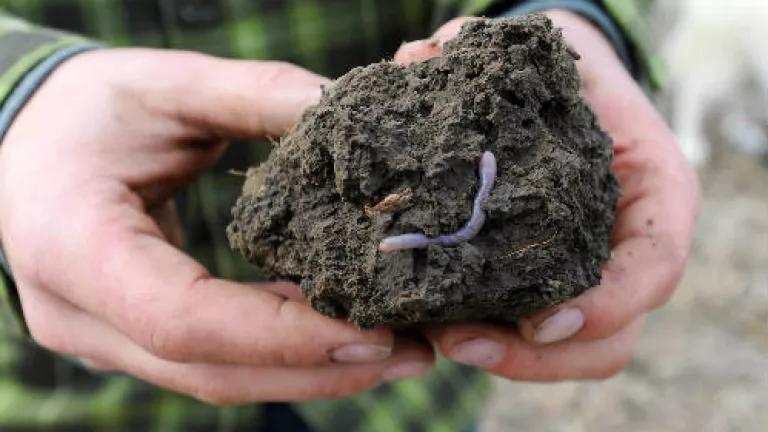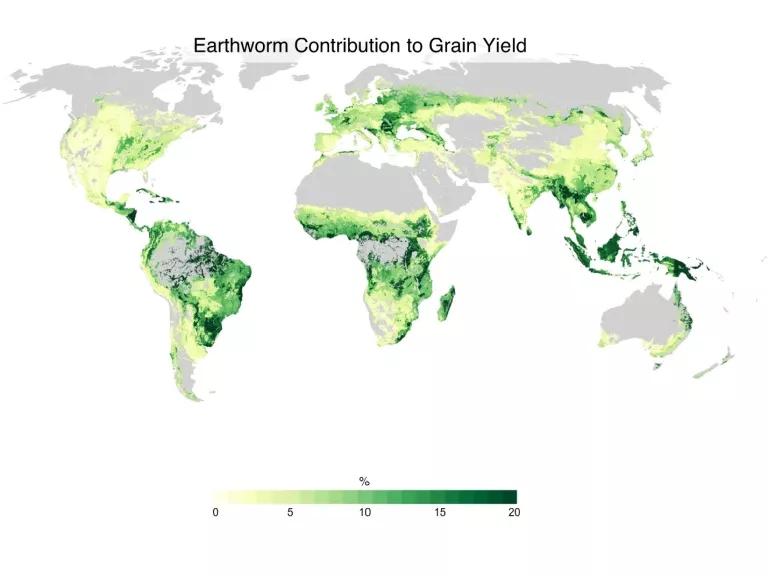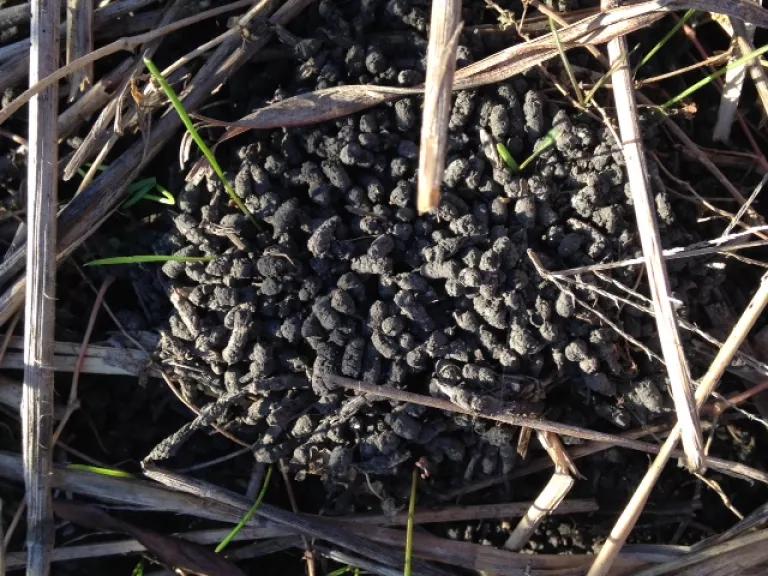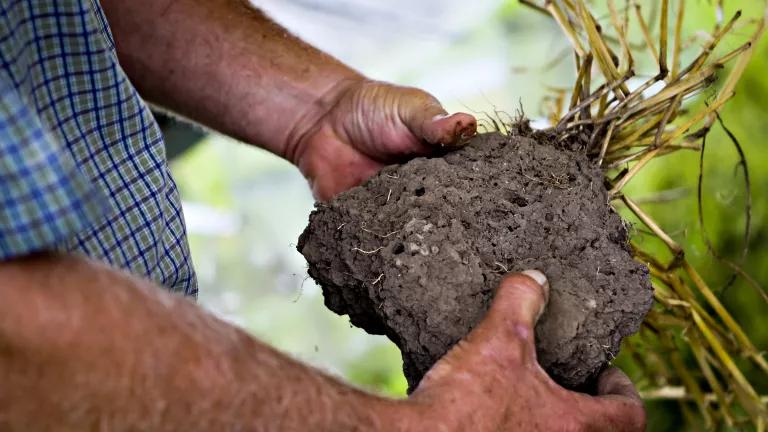How Neonics Harm Earthworms
Neonics harm earthworm growth and reproduction in exchange for uncertain benefits

Earthworms are a key member of the living soil network, and a silent partner in our farming systems - so it doesn't make sense to weaken them with neonics
Guest Author: Dr. Aditi Dubey is a Research Associate in NRDC's Science Office whose Ph.D. was focused on the impacts of neonics in cropping systems
The ability of our farms to continue to produce good food in the face of climate change depends on the soil. More accurately, our food production depends on the interconnected network of living creatures that are the foundation of soil health, and that bring the soil to life. These creatures span a wide range of sizes and shapes, including tiny nematodes and trundling beetles that can help keep pests under control and help decompose plant and animal remains. However, the real stars of the show are earthworms - those tiny ecosystem engineers that aerate soil, break down plant residues, and contribute to the annual production of over 140 million metric tons of food worldwide.
A lot of the benefits that we get from earthworms - aerating the soil, bringing in oxygen, helping to drain water, and making space for plant roots - come from the burrows they make. Earthworms ingest soil as they burrow, leaving behind worm casts that are hotspots of microbial activity, and can help accelerate the transformation of soil carbon into more durable forms. As they feed, earthworms also help to break down organic material and release the nutrients inside for crops to use. Though many of the earthworms we see in agricultural fields are not native to the United States and can have negative impacts on native forest ecosystems, they are incredibly important for food production.

Relative contribution of earthworms to yield (% of total) of cereal grains (i.e., grass species). Grains considered include wheat, rice, maize, and barley. Darker shades of green indicate stronger estimated earthworm impacts. Modified from Fonte, S.J., Hsieh, M. & Mueller, N.D. Earthworms contribute significantly to global food production. Nat Commun 14, 5713 (2023). https://doi.org/10.1038/s41467-023-41286-7 CC 4.0
The importance of earthworms to farms is obvious, which is why practices that can weaken and kill members of the soil ecosystem, such as the overapplication of neonicotinoid pesticides (“neonics”), pose such a threat. If we’re going to continue depending on earthworms to help grow our food, we need to acknowledge the ways that neonics harm them - weakening them, making it harder for them to burrow through the soil, and making it harder for them to reproduce.
Neonics are particularly toxic to soil organisms higher up in the food chain, including earthworms. High neonic concentrations can outright kill earthworms, but even at sub-lethal concentrations neonics can weaken earthworms by attacking their ability to reproduce. Soil neonic concentrations that are similar to that expected after the application of treated seeds can reduce earthworm weight gain, reduce egg-laying, cause tissue damage and damage earthworm DNA. Neonics also impact earthworm behavior - earthworms were more likely to avoid soils that had been treated with neonics, even at low concentrations. When earthworms were forced to live in neonic treated soil, they made fewer burrows and accumulated neonics in their bodies.
The impacts of even small amounts of neonics in soil on earthworm physiology and behavior can have far-reaching impacts for both agriculture and biodiversity preservation. Less reproduction and weight gain means fewer, smaller adult worms in our agricultural systems, and we may miss out on the benefits to water drainage, carbon storage and organic matter breakdown that earthworm tunnels provide. Earthworms that ingest soil with sub-lethal neonic concentrations are weakened, gaining less weight and making fewer burrows - just like a person with food poisoning might find it difficult to follow their normal routine. Given that in the next few decades we will depend on healthy soils in our farming systems to adjust to shifts in rainfall and more extreme weather events, it does not make sense to weaken one of our biggest partners in producing healthier soils- earthworms.

Earthworm casts are hotspots of soil biological activity, and help transform carbon into more stable forms. Credit: Lara Bryant, NRDC
Luckily, we can take steps to protect earthworms from the negative impacts of neonics by reducing the amounts of neonics applied, particularly in seed coatings that do not provide clear benefits and leave behind neonics in the soil and groundwater. New York recently passed groundbreaking legislation to limit these unnecessary neonic uses, and states like Minnesota have a critical opportunity to follow suit. Farming practices such as diversifying crop rotations, cover cropping and regenerative farming also improve soil habitats for earthworms by providing more plant material for them to break down and consume. Earthworms are a key member of the living soil network, and a silent partner in our farming systems - let’s protect that partnership for years to come.





